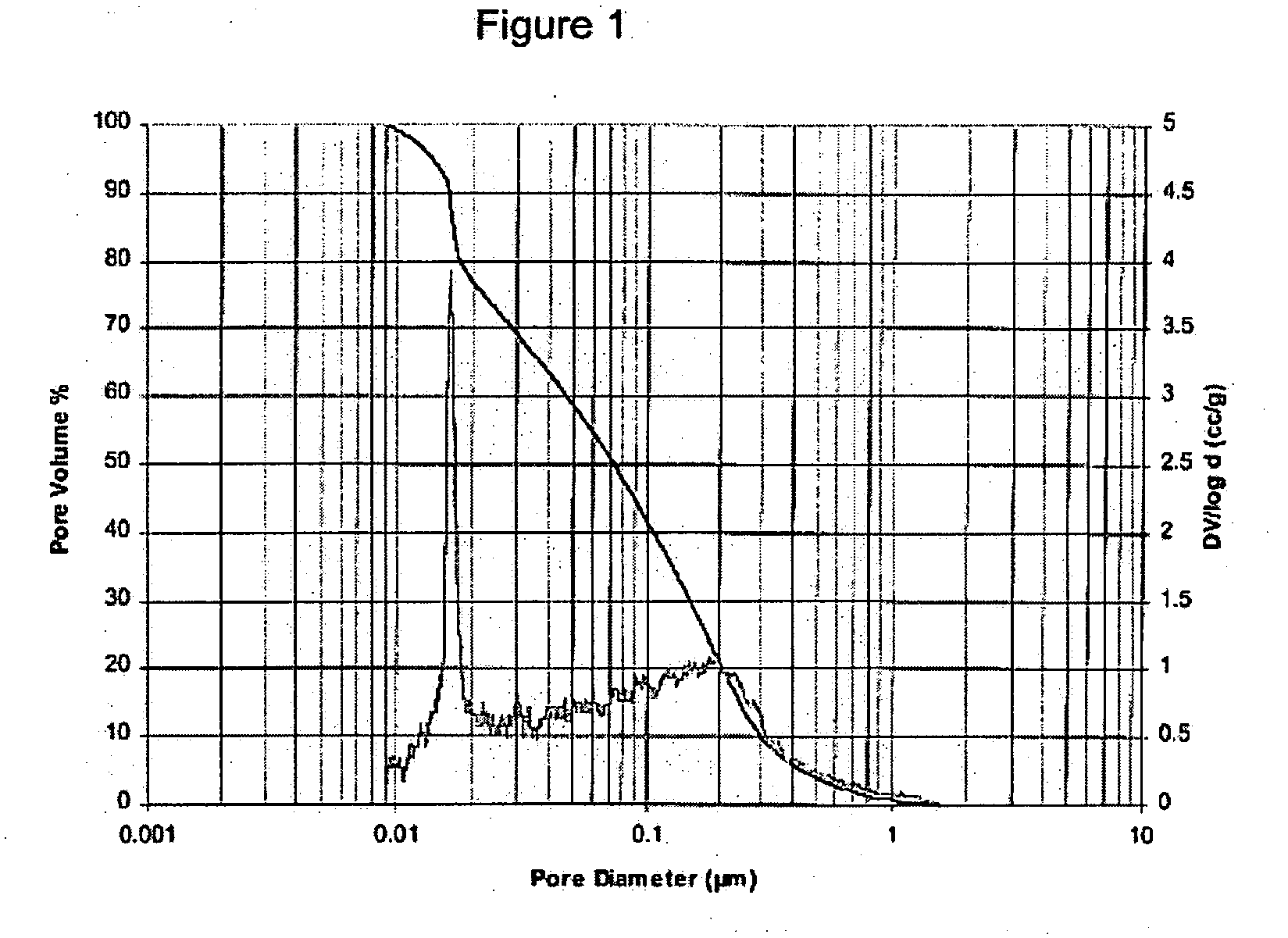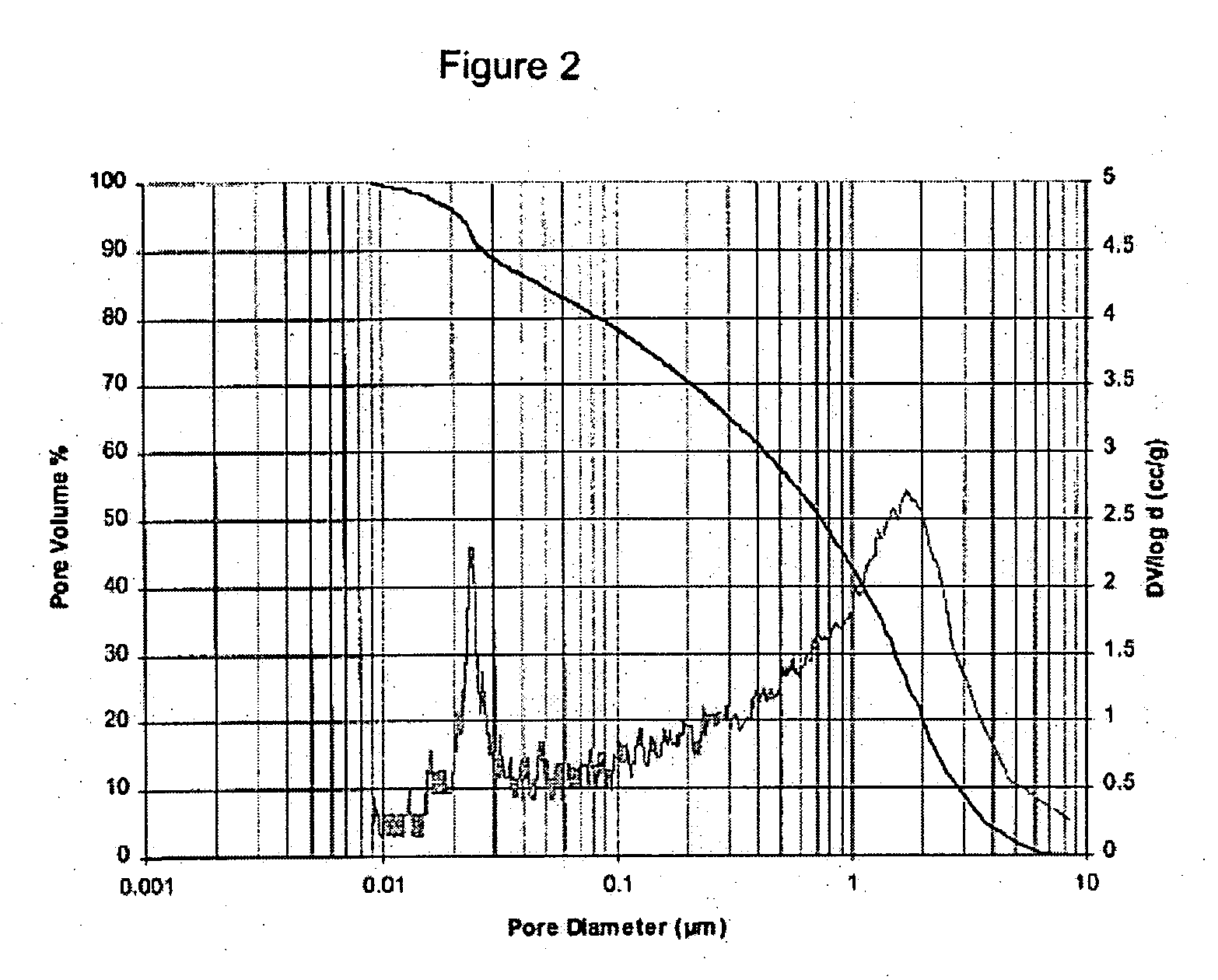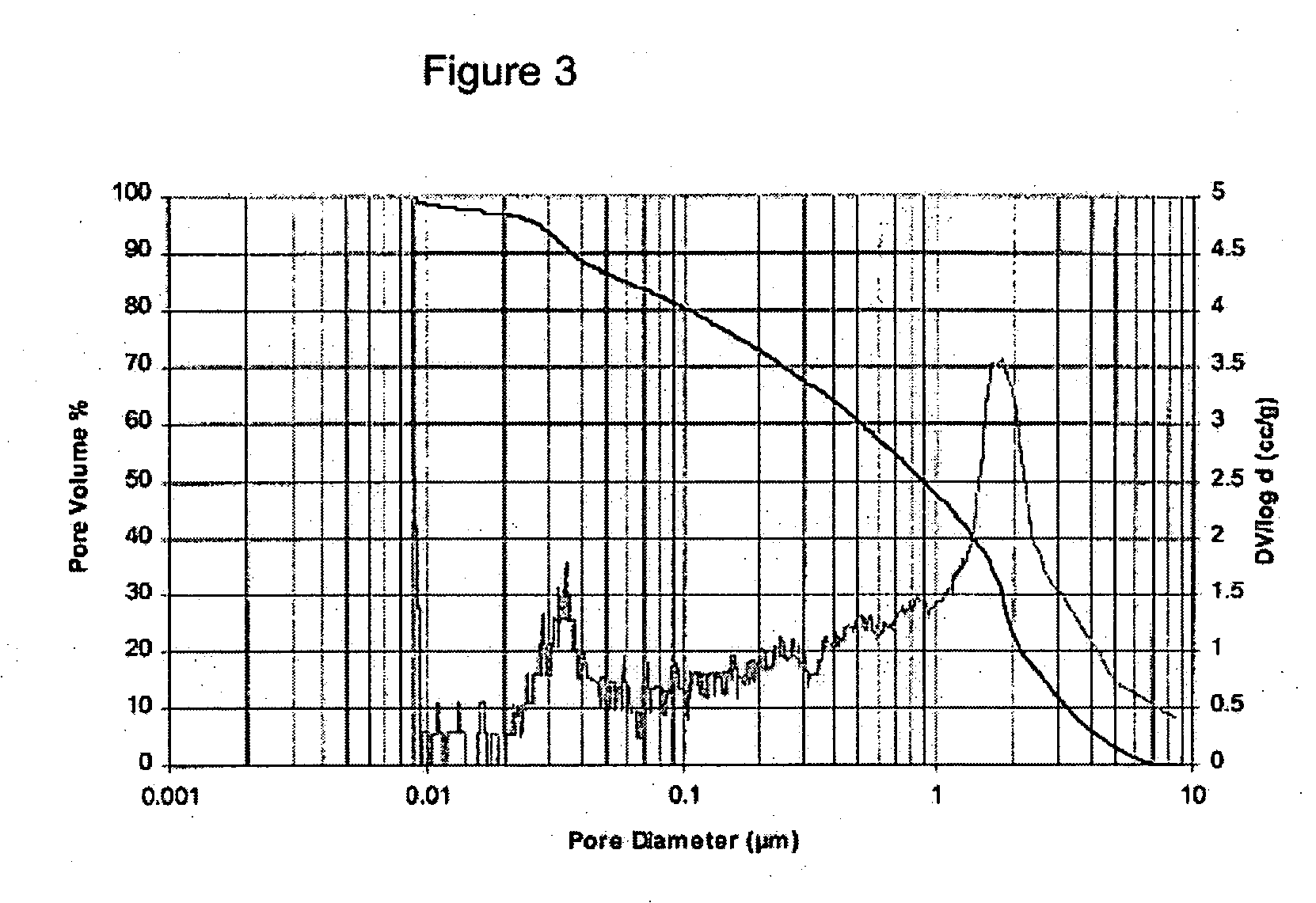Microporous material and a method of making same
a microporous matrix and microporous material technology, applied in the manufacture of final products, fuel cell details, domestic articles, etc., can solve the problem of not being very dimensionally stable at elevated temperature, and stretch microporous matrix, so as to improve dimensional stability and physical properties
- Summary
- Abstract
- Description
- Claims
- Application Information
AI Technical Summary
Benefits of technology
Problems solved by technology
Method used
Image
Examples
examples
[0059] Example A is membrane containing the following:
RatioPolymerFillerFiller-Example AUHMWPESiO2PlasticizerMinorsPolymerExtrusion9.6%25.0%64.0%1.4%2.6Extraction23.5%61.1%12.0%1.4%2.6
[0060] Now taking the material from Example A additional samples were prepared using tenter frame equipment. This equipment allows for both uniaxial and biaxial stretching. The following parameters were used to produce these samples:
TABLE 1Stretched Membrane CharacteristicsModulus -Tensile -SampleNetBackwebPunctureMDMD#Stretch %(μm)(N)(MPa)(N / mm2)Elongation MD %A-103001736.771.211.923A-113001738.369.614.127A-124001479.9170.829.921A-134001447.996.118.522A-145001247.4261.134.317A-155001207.3146.324.019A-163001599.9101.823.340A-1740015011.4149.531.328A-18300 × 350803.323.54.621A-19200 × 3501065.727.311.254
[0061] A-18 and A-19 samples were biaxially stretched and produced using a sequential stretching device. The other samples refer to stretched membranes in the MD direction (uniaxial) only.
TABLE 2St...
PUM
| Property | Measurement | Unit |
|---|---|---|
| tensile strength | aaaaa | aaaaa |
| wet out time | aaaaa | aaaaa |
| tensile strength | aaaaa | aaaaa |
Abstract
Description
Claims
Application Information
 Login to View More
Login to View More - R&D
- Intellectual Property
- Life Sciences
- Materials
- Tech Scout
- Unparalleled Data Quality
- Higher Quality Content
- 60% Fewer Hallucinations
Browse by: Latest US Patents, China's latest patents, Technical Efficacy Thesaurus, Application Domain, Technology Topic, Popular Technical Reports.
© 2025 PatSnap. All rights reserved.Legal|Privacy policy|Modern Slavery Act Transparency Statement|Sitemap|About US| Contact US: help@patsnap.com



